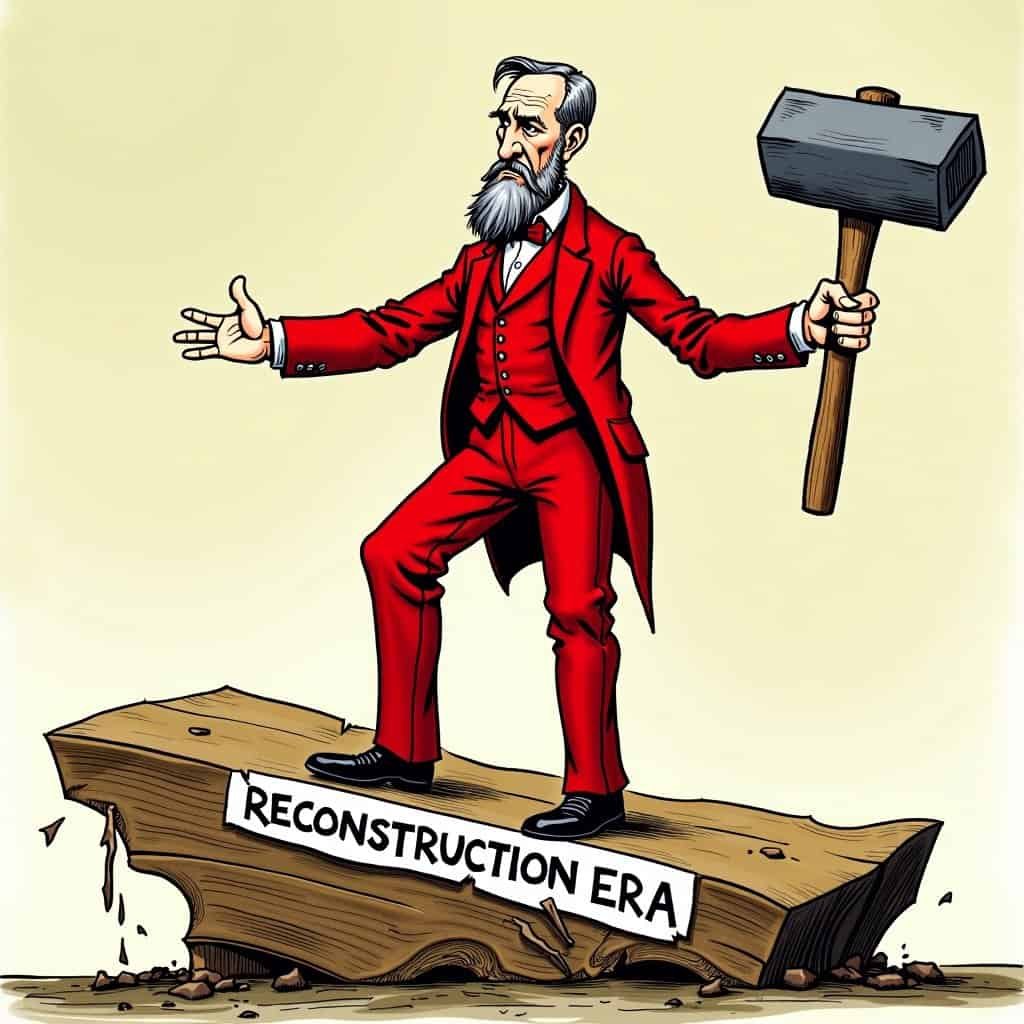Picture this: the Civil War’s dust has settled, the Union stands intact, and the nation holds its breath, wondering how to mend its tattered fabric. Enter Ulysses S. Grant, the 18th President of the United States. During the Reconstruction era – one of the most testing periods in U.S. history – Grant opted for a sledgehammer approach in the name of federal authority, rather than a gentle needle and thread. But was he a steadfast conservative maintaining national unity, or a heavy-handed enforcer of federal power? Grab a cold drink, and let’s unpack this historical conundrum together!
Protecting the Union wasn’t exactly a weekend hobby for Grant. He embodied the art of getting things done – a symbol of keeping priorities straight without handing the reins back to the unruly Southern states. After chaos, true conservatism typically champions tradition, balanced governance, and maintaining order. Grant’s move to beef up federal authority? It reeked of pragmatism rather than idealistic hand-holding.
During Reconstruction, Grant had one main goal: keep the republic unified while ensuring the South’s old guard didn’t stage a comeback tour. This no-nonsense approach included enforcing the Reconstruction Acts, safeguarding newly freed citizens’ rights, and – through clenched teeth – working to rebuild the South’s shattered economy. Now, here’s the million-dollar question: Was Grant a cunning statesman keeping Reconstruction on track, or was he trampling on local governance like a nosy neighbor? I’ll let you be the judge as we examine Grant’s methods and motivations.
Grant’s Approach to Reconstruction
First off, Grant wasn’t naive. He didn’t try to replace bullets with flowery speeches. Instead, he tackled post-war realities with that classic Midwestern grit. His administration created a stable environment by passing the Enforcement Acts against troublemaking groups (I’m looking at you, KKK) to maintain law and order while upholding citizenship rights for freed slaves. Conservatives would likely tip their hats to his commitment to law enforcement because, let’s face it, nobody likes a mob pretending to speak for ‘heritage.’ And wasn’t that little ol’ Constitution he was defending all about law and justice, anyway?
Federal Muscle: Not Just for Democrats
Cutting through today’s political spin, Grant’s federal actions prove that flexing big-government muscle isn’t exclusively a Democratic party trick. While modern liberals paint federal oversight as the superhero solving all our problems (*cough* Green New Deal *cough*), Grant’s robust moves were about security and a hands-on approach when local governments dropped the ball. Sure, some Southern critics probably grumbled about overreach and tyranny in their thick drawls, but let’s be real – enforcing the law after years of bloodshed? Not exactly optional.
Grant’s Reconstruction Policies
| Policy | Impact |
|---|---|
| Enforcement Acts | Combatted KKK and protected freed slaves’ rights |
| Strengthening Federal Authority | Maintained order and national unity |
| Economic Rehabilitation | Efforts to rebuild the Southern economy |
Pragmatic Conservatism in Action
Grant wasn’t out there stirring up political drama like a daytime talk show host. He learned early on that pie-in-the-sky libertarian dreams don’t always pan out – we need some structure to avoid repeating the same mistakes. By strengthening federal authority with a deft touch, he exemplified conservative ideals: protecting citizens, reining in chaos, and reminding folks that not every fight for order needs to be wrapped in fancy progressive slogans.
Reactions and Legacy
Now, will every supporter of ‘state individuality’ throw a fit over this assessment? Probably. Some political camps love to dramatically claim that Grant’s centralization of federal power “forever ruined the balance.” Bless their hearts. What’s often overlooked is the U.S. system’s practical flexibility as different eras call for different tactics. Think of it like reinforcing wooden rails: the tools and repairs you need depend heavily on the context of the times.
Grant approached his presidency with the same down-to-earth style that rugged Yankees admire – rebuilding public trust after national trauma. By not immediately pouncing on the vanquished South (though carpetbagger rumors spread anyway), he showed subtle statesmanship. It was a necessary procedure to sidestep calls for vengeance and prevent violent antisocial elements from bouncing back. Conservatives often focus on easily measurable results, but Grant’s approach involved calibrating solutions with an eye on prudent, long-term stability.
Table of Contents
- Grant’s Approach to Reconstruction
- Federal Muscle: Not Just for Democrats
- Pragmatic Conservatism in Action
- Reactions and Legacy






